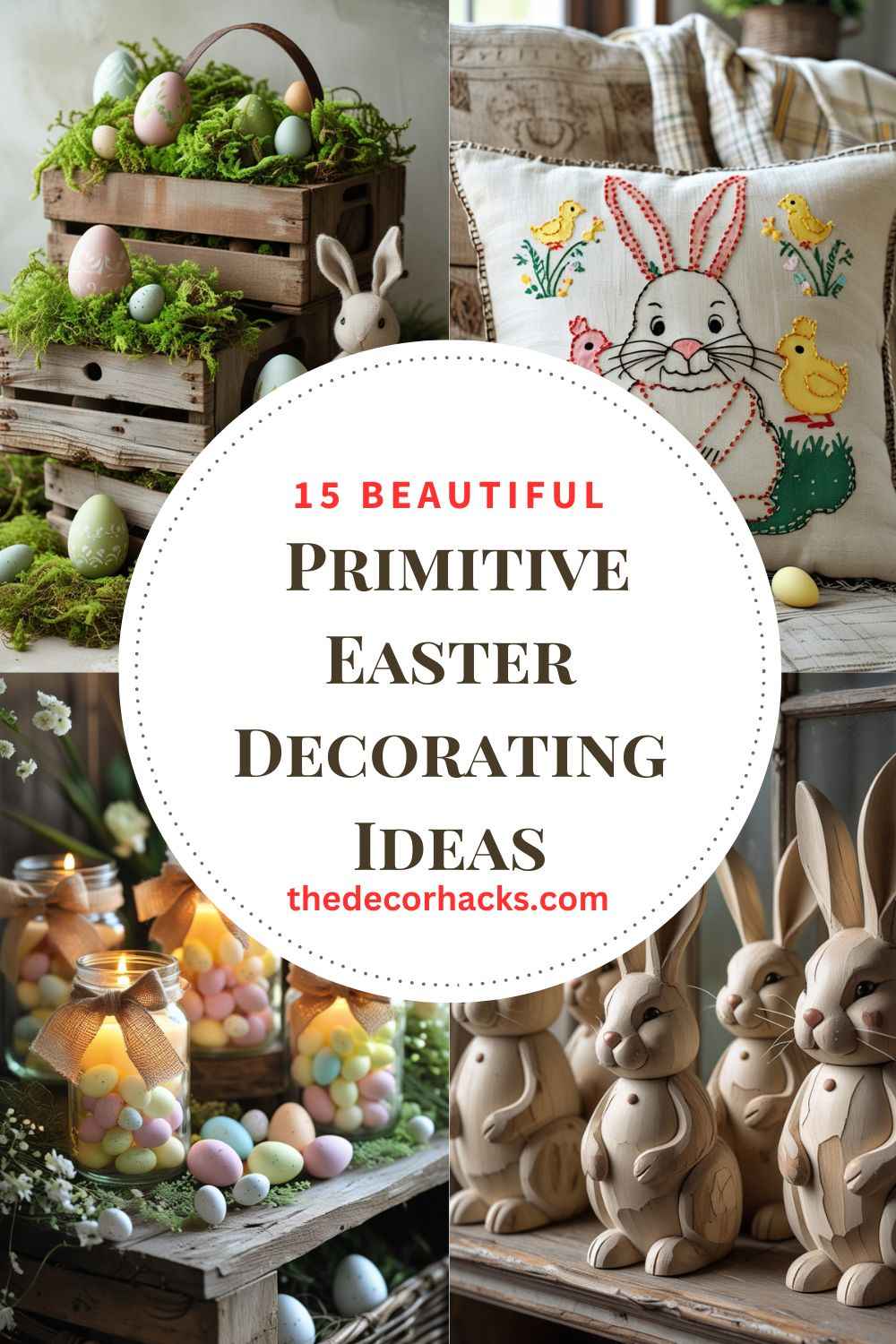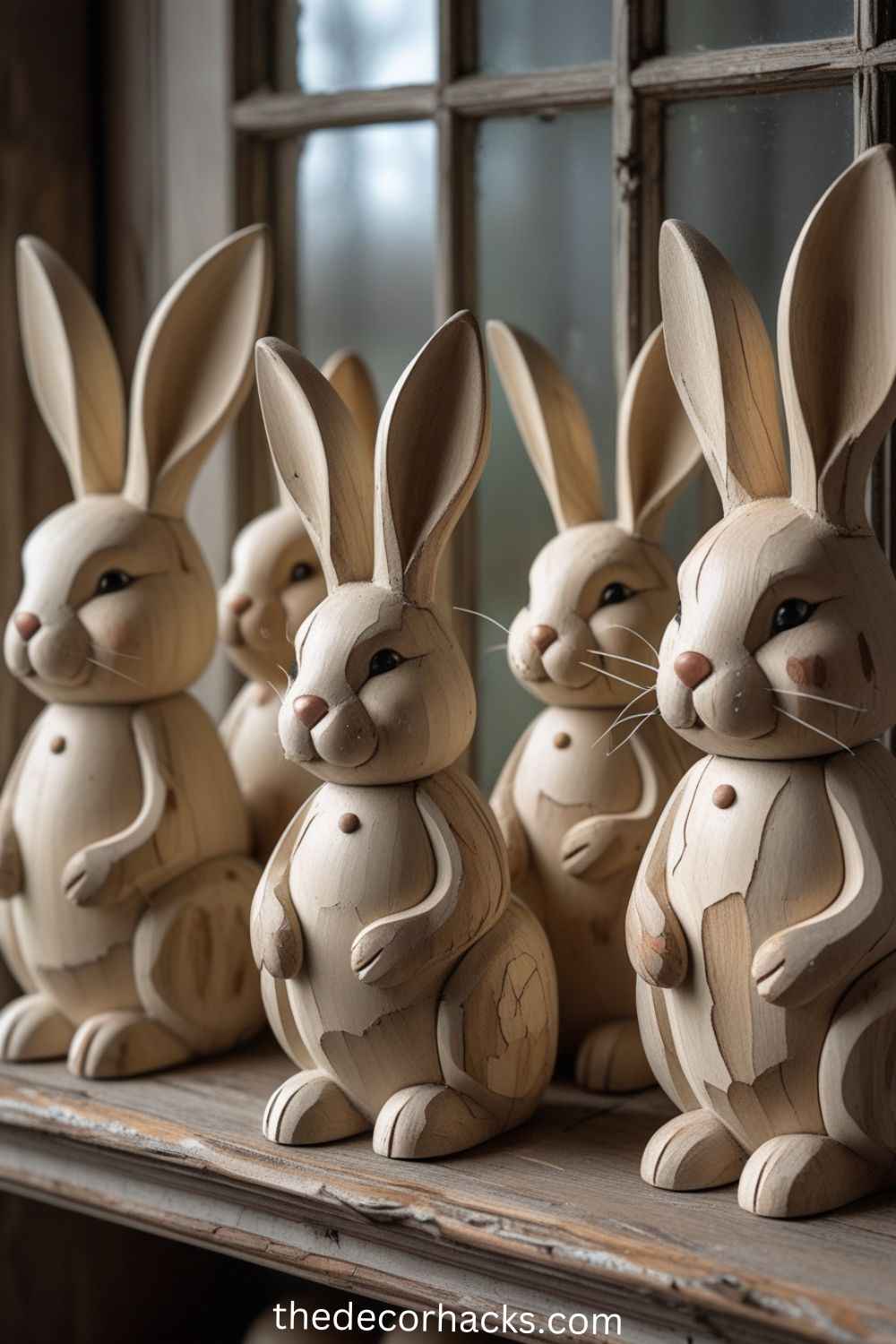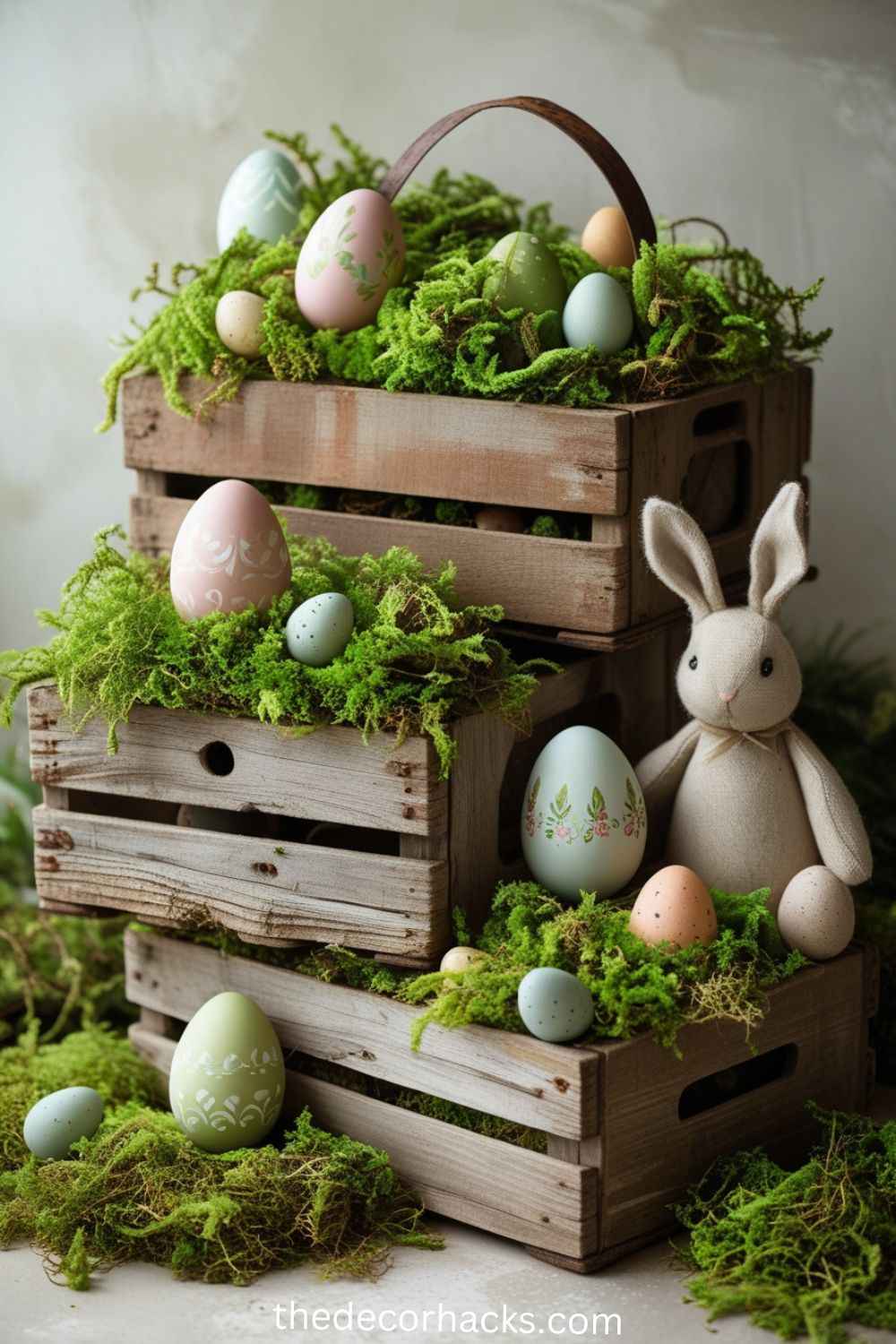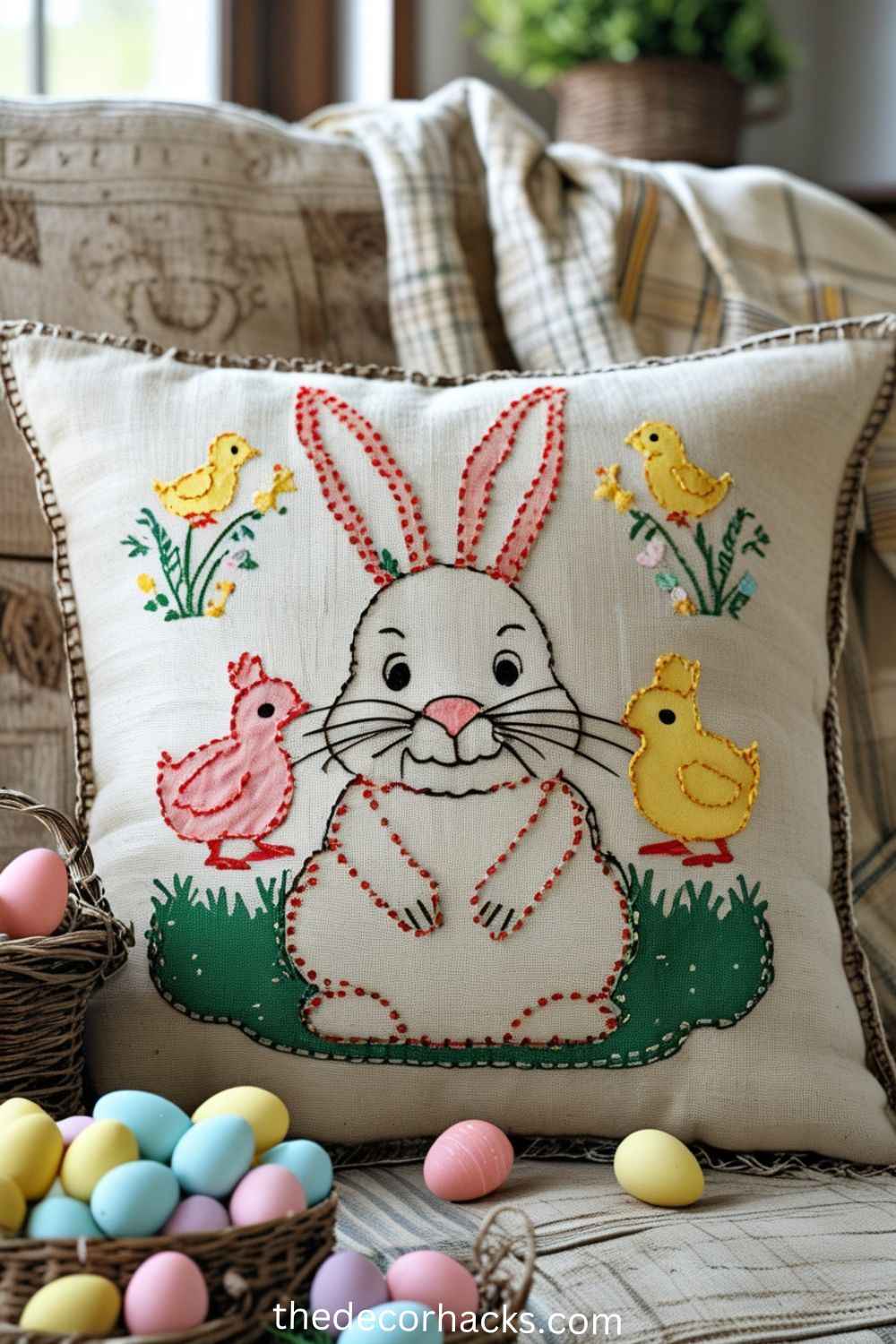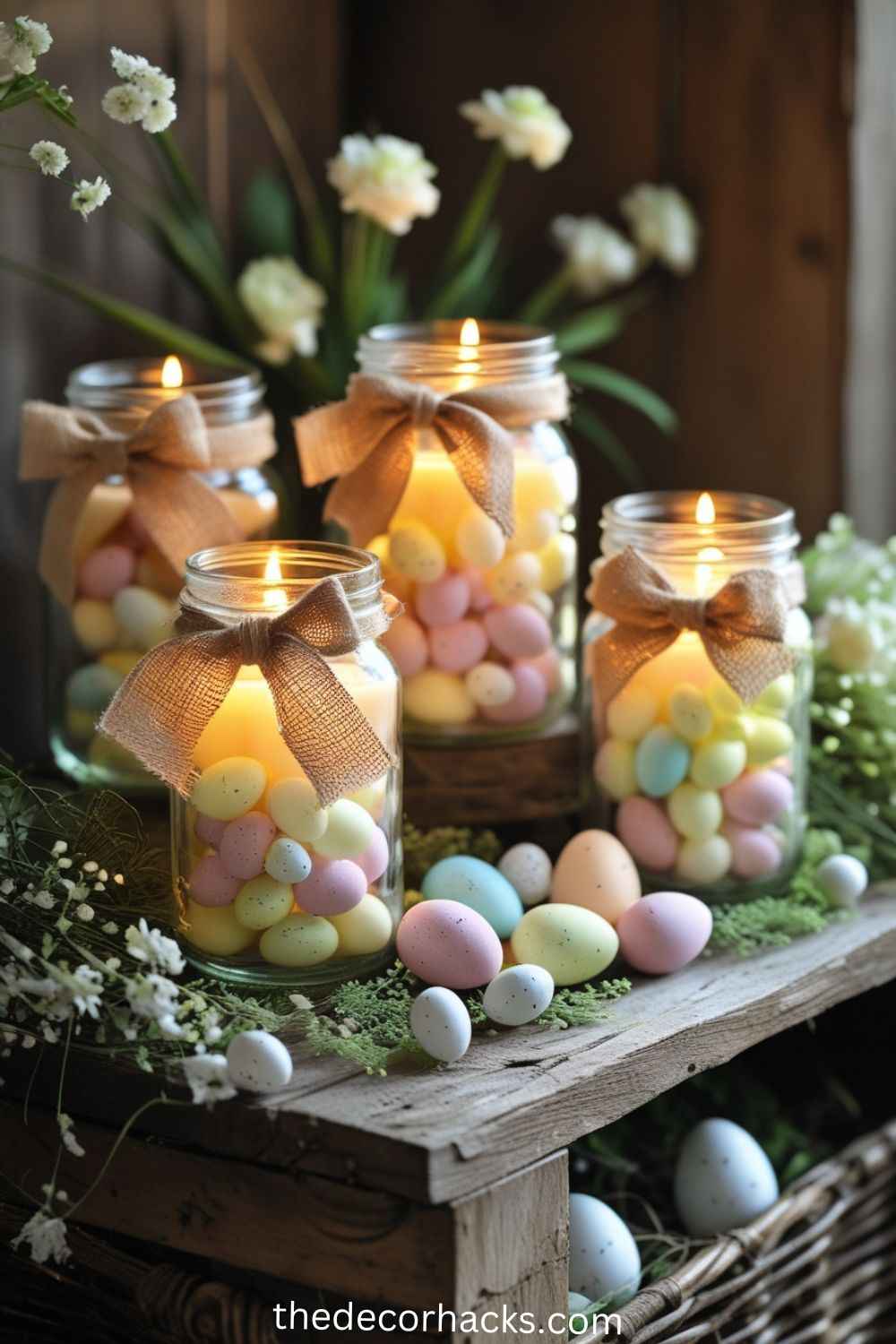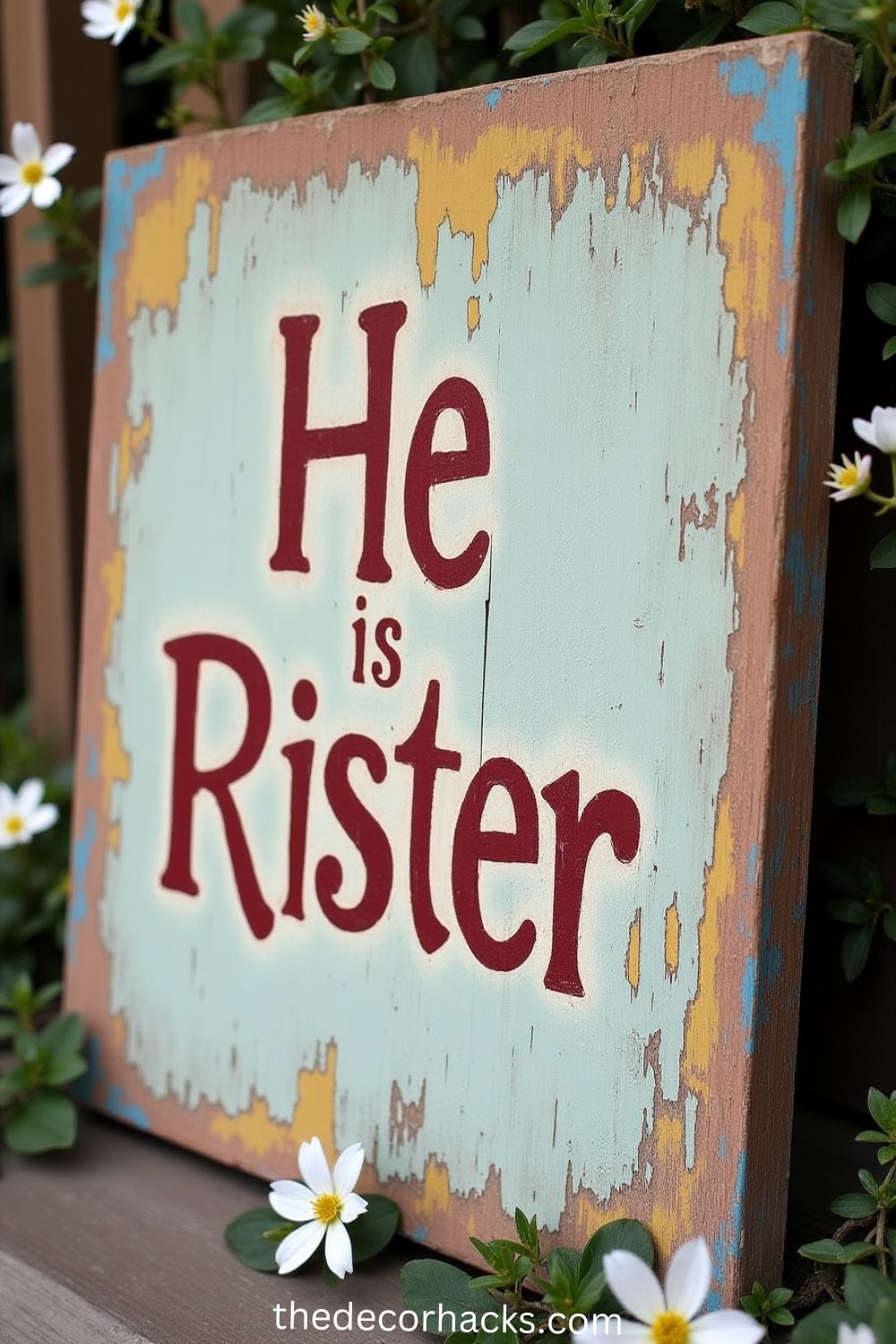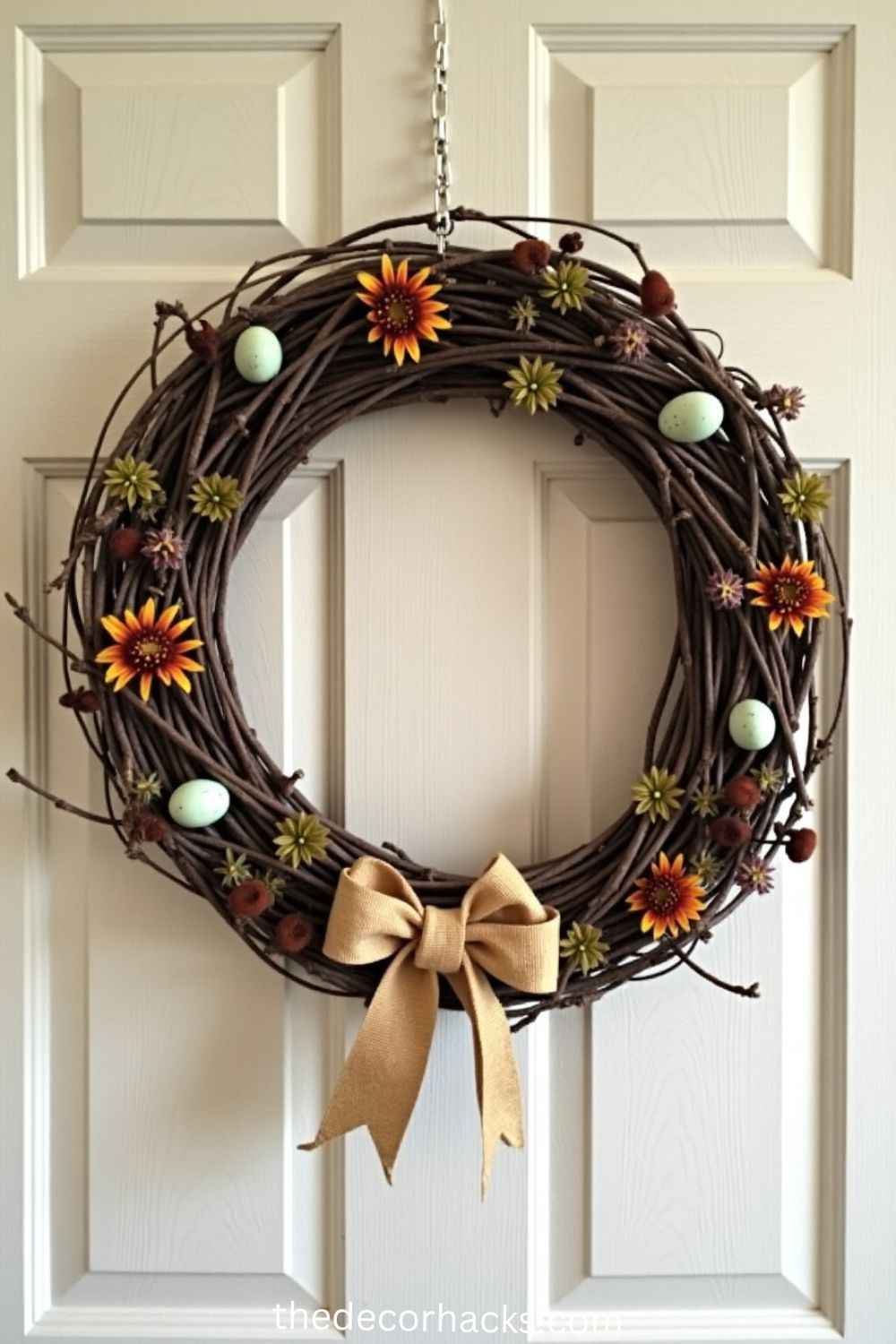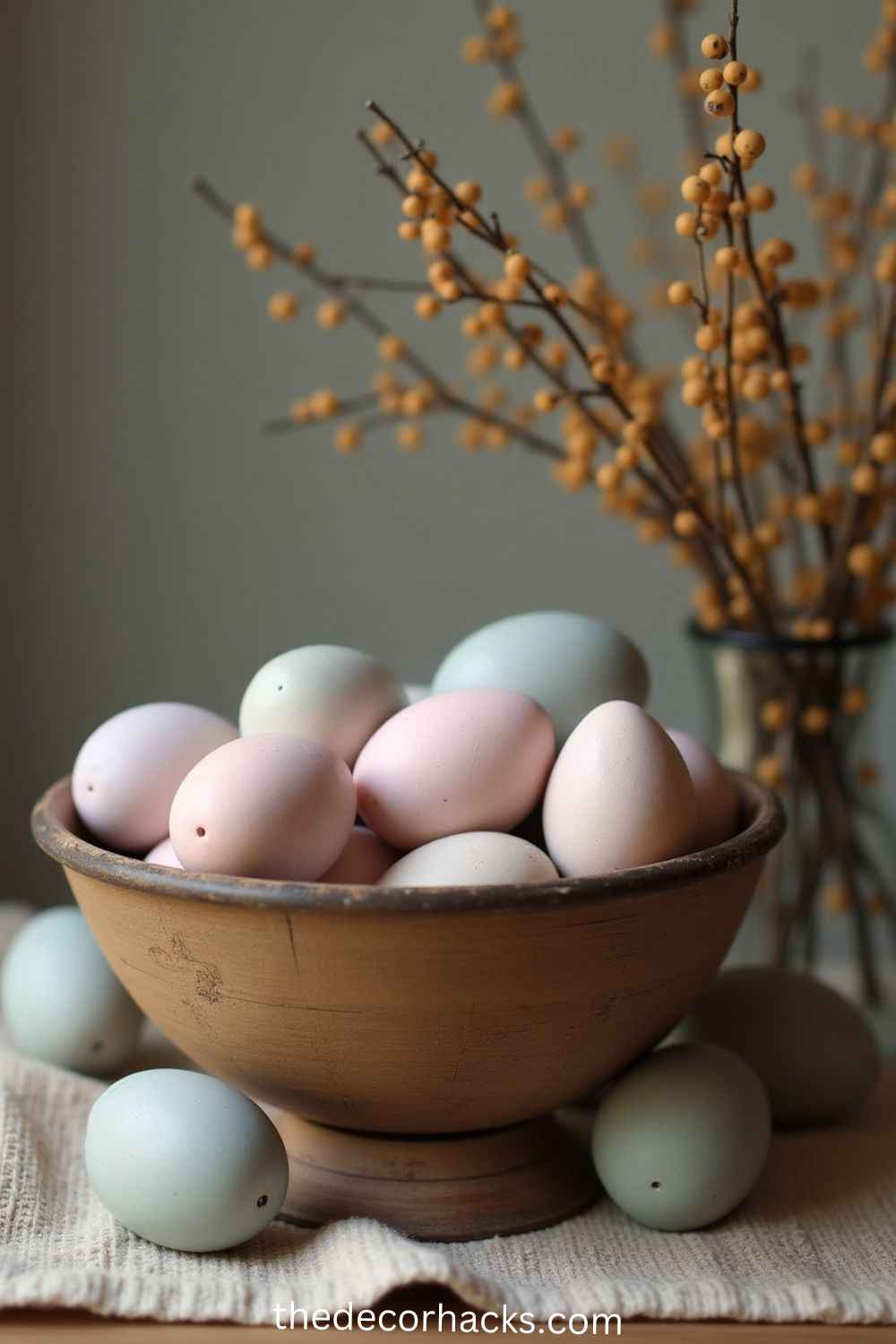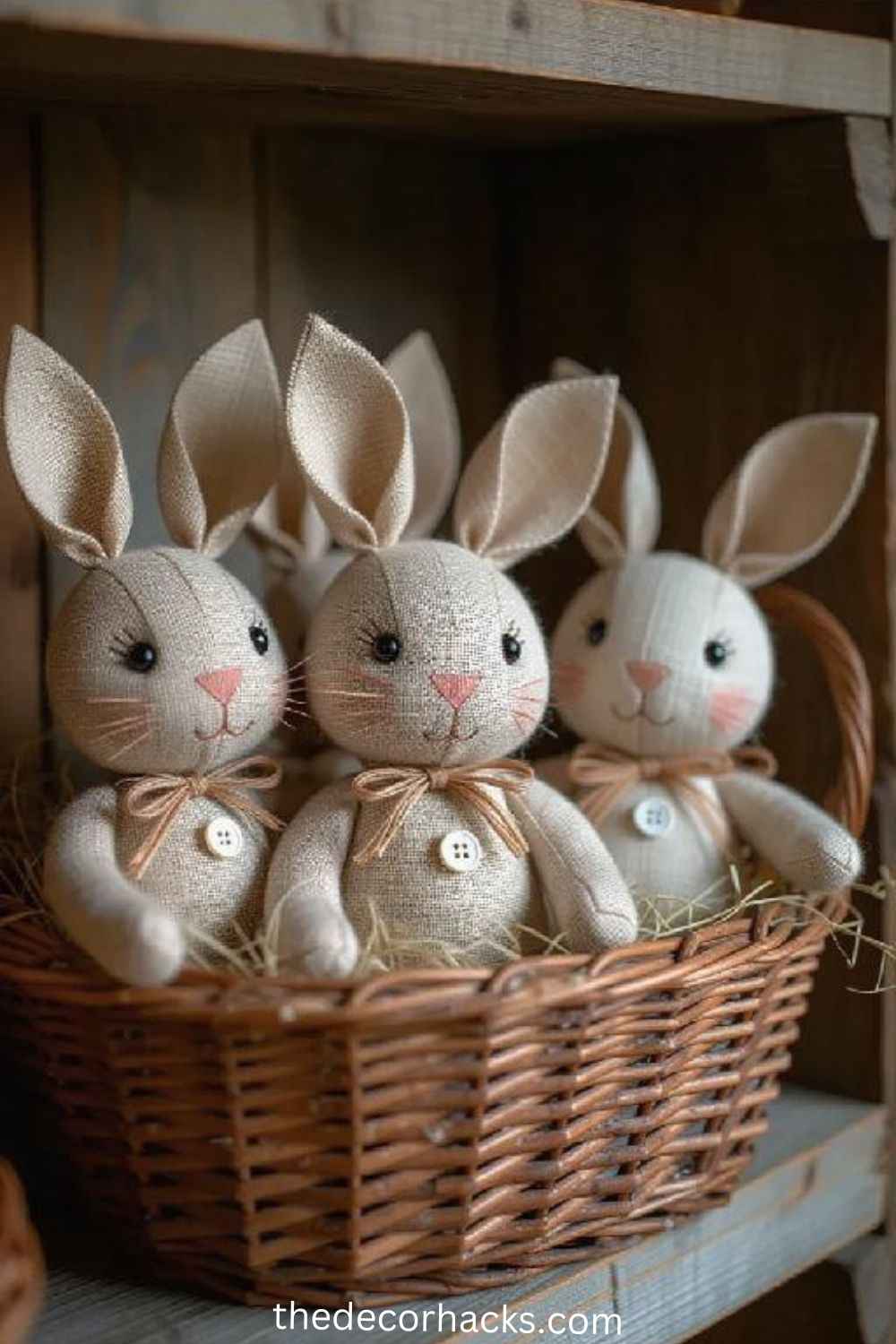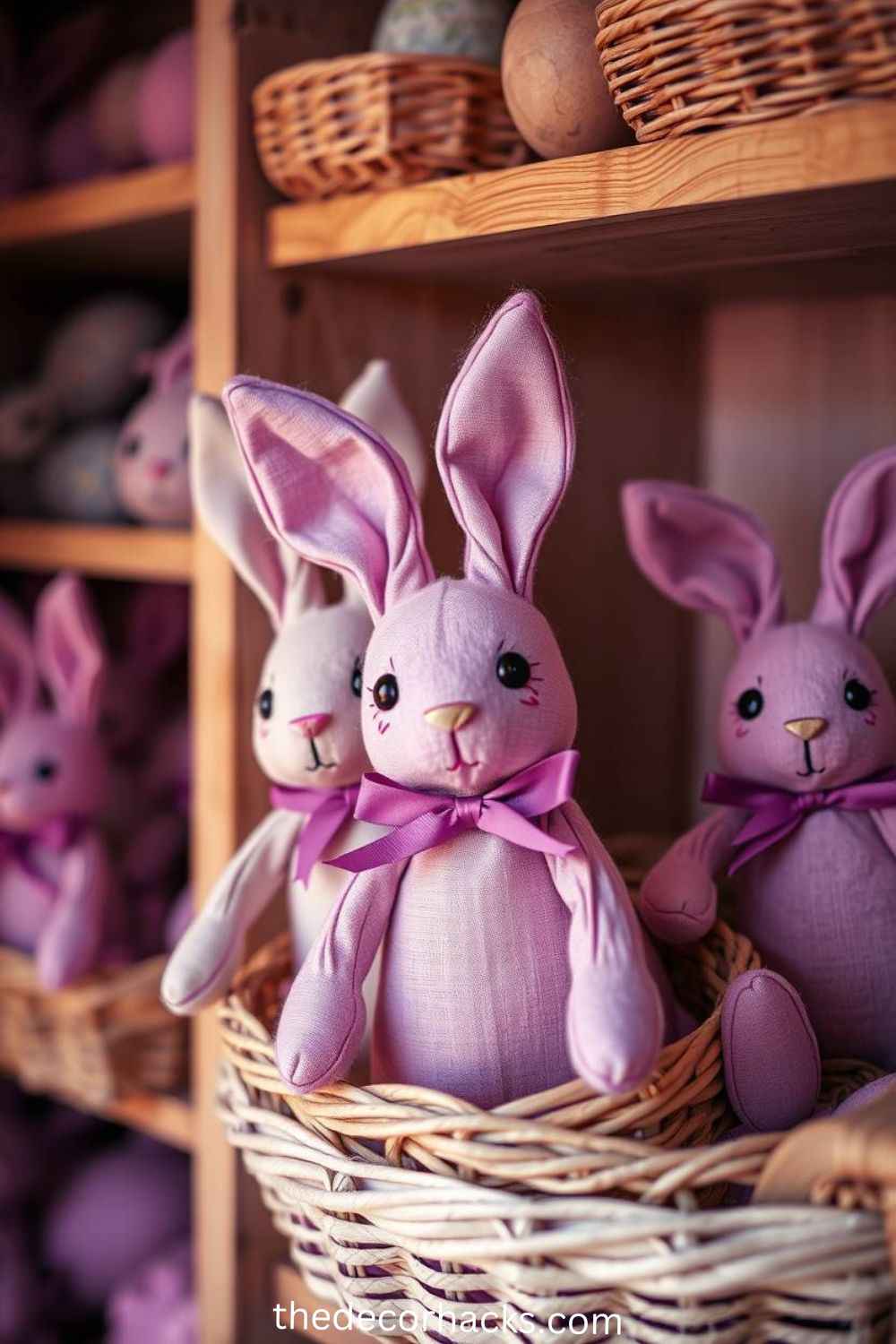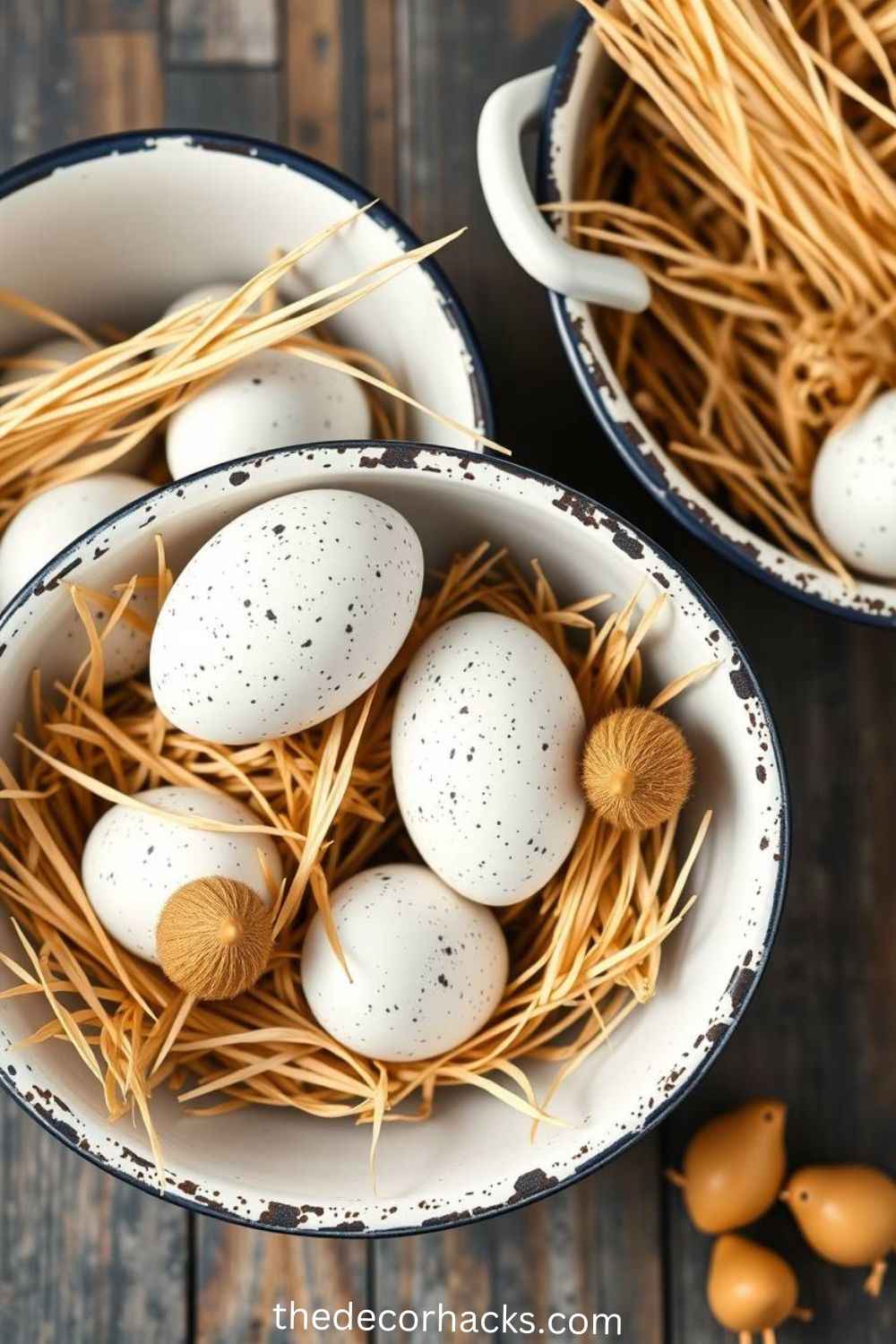Primitive Easter Decorating Ideas – Celebrate Easter with charming, rustic décor that brings warmth and nostalgia to your home. Embracing primitive style means incorporating simple, handcrafted, and vintage-inspired elements that create a cozy, well-worn aesthetic. Rooted in early American traditions, primitive décor often features distressed wood, natural fabrics, muted tones, and folk art-inspired accents.
Primitive Easter decorations bring a sense of warmth and tradition to the holiday, making your space feel inviting and timeless. Unlike modern, mass-produced décor, primitive Easter accents have a handmade and well-loved appearance, adding character to every corner of your home. Whether you’re using aged wooden bunnies, hand-stitched fabric eggs, or rustic candleholders, these elements create a heartfelt and nostalgic atmosphere, perfect for celebrating Easter with family and friends.
Primitive Easter Decorating Ideas
Rustic Wooden Bunny Accents
Carved wooden bunnies with a distressed finish are a perfect addition to primitive Easter décor. These handcrafted pieces add a charming, vintage feel to mantels, shelves, and tables.
Aged Wooden Crates for Displays
Old wooden crates make wonderful Easter displays when filled with moss, hand-painted eggs, and primitive stuffed bunnies. Their rustic, worn look enhances the nostalgic farmhouse appeal.
Handmade Burlap and Muslin Easter Pillows
Easter-themed pillows made from burlap or muslin with hand-stitched designs bring a soft and cozy touch to your living space. Choose vintage patterns or simple bunnies and chicks for an authentic primitive look.
Vintage Mason Jar Candle Holders
Mason jars wrapped in twine or burlap and filled with candles or tiny Easter eggs create a warm, flickering glow. They are simple yet elegant additions to primitive Easter décor.
Distressed Wooden Signs with Easter Sayings
Rustic wooden signs with hand-painted or stenciled Easter messages like “He is Risen” or “Happy Easter” add a heartfelt touch. A weathered, chippy-paint finish enhances the primitive appeal.
Twig and Grapevine Wreaths
A handmade wreath made of twigs and grapevines, decorated with dried flowers, burlap bows, or speckled eggs, creates a welcoming entrance. The natural materials blend beautifully with primitive style.
Farmhouse-Style Wooden Egg Displays
Instead of plastic or bright-colored eggs, opt for stained or painted wooden eggs in muted pastel tones. Display them in a dough bowl, basket, or wire egg holder for a timeless Easter centerpiece.
Rustic Tiered Tray Arrangements
A distressed wooden tiered tray filled with small Easter figurines, fabric bunnies, and candleholders creates a beautiful focal point for your kitchen or dining area.
Handmade Primitive Fabric Bunnies
Stuffed fabric bunnies made from muslin or burlap with button eyes and hand-stitched details add a nostalgic charm. Display them in baskets or on shelves for a cozy Easter touch.
Enamelware Bowls with Easter Fillings
Vintage enamelware bowls filled with straw, speckled eggs, and tiny wooden chicks bring a classic farmhouse touch to your décor. The chippy, aged enamel look enhances the primitive aesthetic.
FAQ
1. What is primitive Easter décor?
Primitive Easter décor features rustic, handcrafted, and vintage-inspired elements, often made from natural materials like wood, burlap, and muslin. It focuses on simple, timeless designs with a nostalgic charm.
2. How can I create a primitive Easter look in my home?
Use distressed wooden signs, fabric bunnies, aged baskets, and natural elements like twigs and moss. Stick to muted, earthy tones rather than bright colors for an authentic primitive feel.
3. Where can I find primitive Easter decorations?
You can find them at antique stores, flea markets, online shops specializing in farmhouse décor, or make DIY versions using natural materials and simple crafting techniques.
4. What colors work best for primitive Easter décor?
Soft neutrals like beige, cream, brown, and muted pastels such as faded blue, dusty pink, and sage green work best. Avoid bright, modern colors for a more authentic primitive style.
5. Can I make my own primitive Easter decorations?
Yes! DIY decorations like hand-stitched fabric bunnies, painted wooden eggs, burlap garlands, and distressed wooden signs are perfect for achieving the primitive Easter look.
6. How do I style a primitive Easter centerpiece?
Use a wooden tray or antique dough bowl filled with moss, wooden eggs, twine-wrapped candles, and rustic bunny figurines. Adding an old book or enamelware piece enhances the vintage charm.
7. What materials are commonly used in primitive Easter decorations?
Wood, burlap, muslin, twine, metal, and natural elements like dried flowers, twigs, and moss are commonly used to create primitive-style decorations.
8. How can I decorate my front porch with a primitive Easter theme?
Place a distressed wooden sign with an Easter message, add a twig wreath to your door, and use aged baskets or galvanized pails filled with greenery and eggs for a rustic touch.
9. What are some simple ways to incorporate primitive Easter décor without redecorating my whole home?
Swap out modern décor with a few key pieces like a wooden bunny, a burlap table runner, a vintage-style Easter sign, or a rustic candle holder to introduce a primitive feel.
10. How do I keep my primitive Easter decorations looking authentic and not overly modern?
Stick to handmade or vintage-inspired pieces, avoid glossy or plastic items, and embrace imperfections like distressed finishes, hand-painted details, and natural textures for an aged, timeworn look.
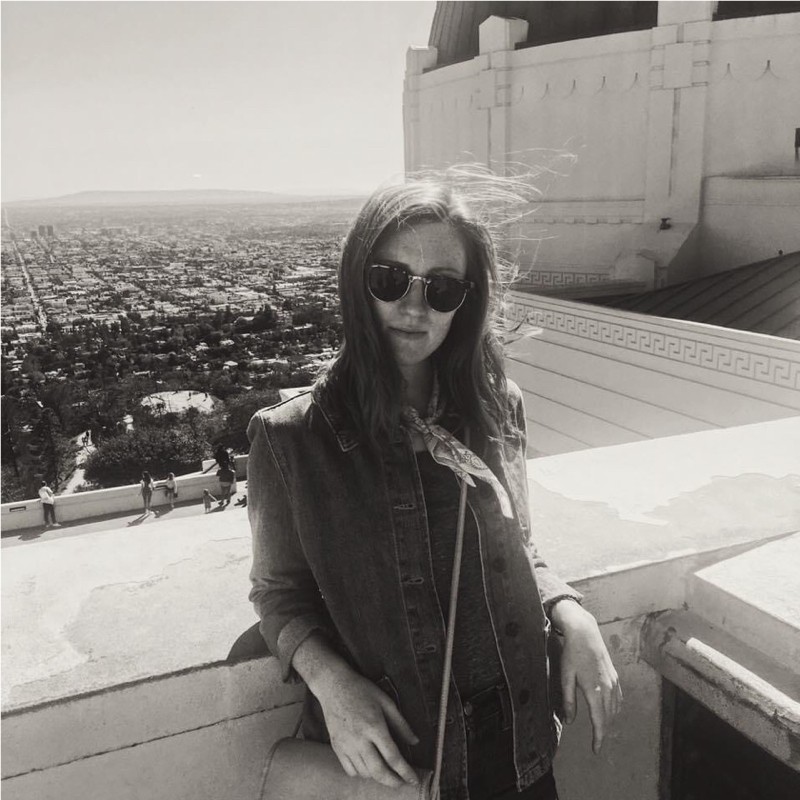
Hi! I’m Meg Yoder, a Pennsylvania-based designer with a passion for brand development and home decor design. Creativity has always been my driving force, whether I’m crafting a cohesive brand identity or reimagining a living space with unique decor hacks.
I created TheDecorHacks.com as a space to share my favorite design ideas, tips, and inspirations. From DIY projects to expert insights, my goal is to help you transform your spaces into something extraordinary—without breaking the bank.
When I’m not busy designing, you can find me exploring vintage markets, experimenting with color palettes, or sipping coffee while sketching my next big idea. Let’s create something beautiful together!
![The Decor Hacks [Trending Decor Design Ideas]](https://thedecorhacks.com/wordpress/wp-content/uploads/2025/01/cropped-the-decor-hacks.png)
